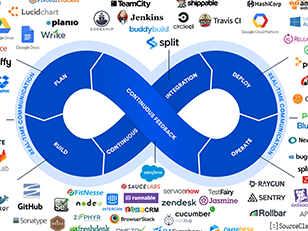Much like any other profession, the IT industry does not exist in a vacuum. Social upheaval will have as much impact on IT professionals as it does on any other. As conversations concerning race relations become more heated and, hopefully, elevated, many in the IT industry are reconsidering the use of terminology such as master/slave to describe the relationship between applications and devices.
Much like any other profession, the IT industry does not exist in a vacuum. Social upheaval will have as much impact on IT professionals as it does on any other. As conversations concerning race relations become more heated and, hopefully, elevated, many in the IT industry are reconsidering the use of terminology such as master/slave to describe the relationship between applications and devices.
Nevertheless, too many of the terms used in IT evoke a sense of domination that reflects a white, male view of the world, said Dr. Shuli Goodman, executive director of LF Energy, an arm of the Linux Foundation committed to combating climate change by modernizing the power grid using open source software.
“Language reflects our mental models,” she said.
The IT industry in general would be better off embracing, for example, biological models rather than terminology that suggests domination and submissiveness, noted Goodman.
Even IBM, which provides some of the oldest and most venerable platforms in the industry, is open to having this conversation.
The company is committed to recognizing the experiences of everyone in the IT community, said Sanjay Chandru, director of IBM Z DevOps.
“If that means we need to have a conversation about terminology, we’re open to that,” he said. “Personally, I think GitHub did the right thing.”
The time to make a mental shift might never be better, said JFrog CEO Shlomi Ben Haim. The IT industry is transitioning toward a more distributed approach to computing that relies less on centralization. As more workloads shift to the edge, IT environments will need frameworks that span everything from the edge to the cloud, he said.
As a result, the IT industry as a whole is shifting more toward a peer-to-peer relationship between software and hardware, he added. “We need IT to be more flexible.”
The history of IT is marked by pendulum swings between centralized and distributed computing. Arguably, the rise of cloud computing represented a shift back toward a more centralized approach to computing that has a lot in common with the way mainframes were deployed and managed more than 50 years ago.
PCs, on the other hand, were at the forefront of a wave of distributed computing that in many cases simply became too unwieldy to manage. Cloud computing afforded IT organizations an opportunity to centralize the management of workloads. However, with the rise of edge computing, workloads might soon be more distributed than ever.
As is often the case when it comes to IT trends, it’s likely new terminology will soon emerge to describe the relationship between highly distributed instances of software and hardware. Hopefully, more perspective will be brought to bear not only on what those terms mean from a technical perspective but also how they might be perceived both inside IT and socially.



